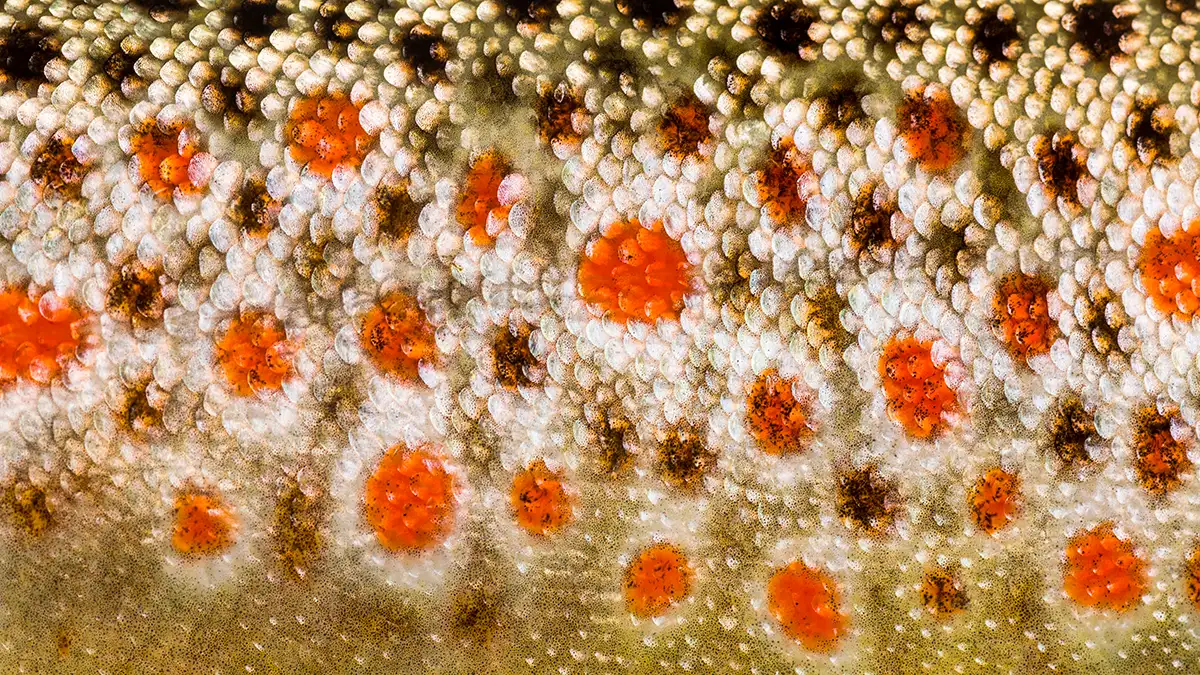The family of Salmonidae or “salmonids” include 45 species of salmon, trout, chars, and whitefish found in North America. Three genera within the Salmonidae family, Salmo, Salvelinus, and Oncorhynchus contain highly sought after types of trout species targeted by anglers from around the world.
It is important for anglers to know how to correctly identify their catch. This guide is designed to aid you in identification of the most commonly sought after trout species. When identifying trout it will be important to notice body coloration, fin color and shape, and the color and size of spots or vermiculations on their sides, backs, and fins.
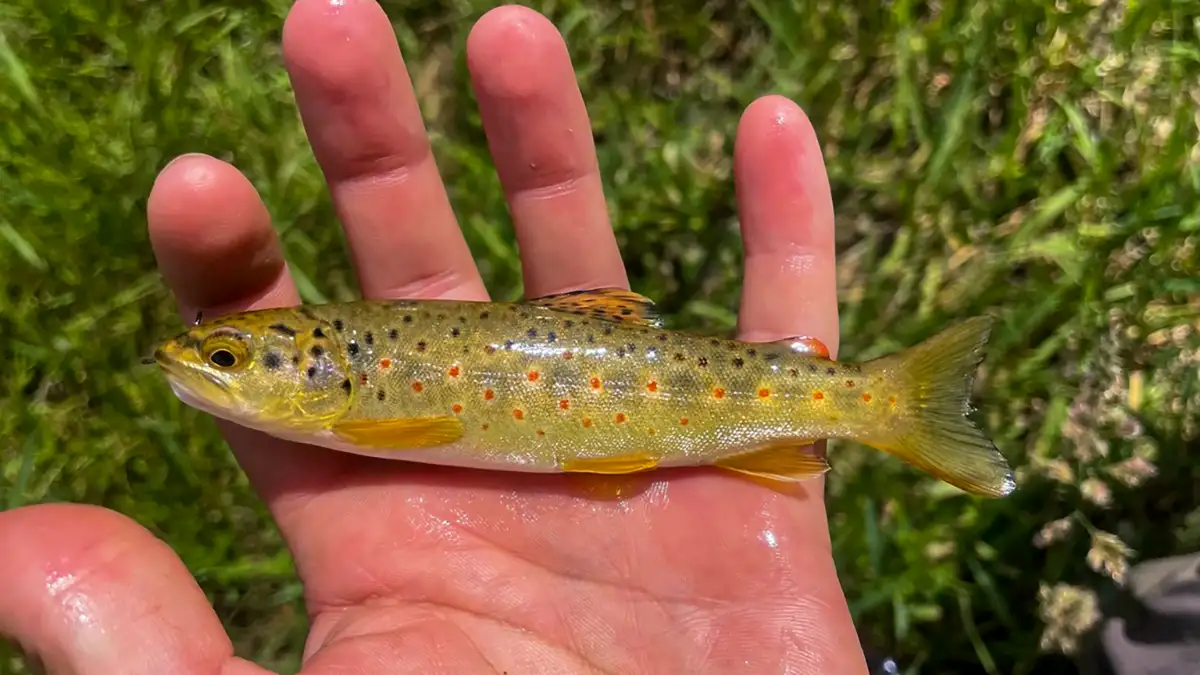
Brown Trout (Salmo trutta)
- Brown to yellow brown in color (vibrant orange colors during spawning season)
- Black spots with margins and red spots with white margins
- Adipose fin has a red margin with red spots
- Anal, pelvic, and pectoral fins orange to yellow in coloration
- Few to no spots on tail
- Develop a bluish hue over the gill plate
- 9-14 anal fin rays
- Slightly forked caudal fin
- See the full Brown Trout Species profile

Brook Trout (Salvelinus fontinalis)
- Dark green back with stretched blotches
- Spots on the side of the fish are yellow and red with a blue halo
- Side profile fades from a green into a yellow or red lower quarter (vibrant during spawning season)
- Belly is silvery white
- Anal, pelvic, and pectoral fins are red with a white edge
- 9-13 anal fin rays
- Stretched blotches on tail
- Slightly forked caudal fin
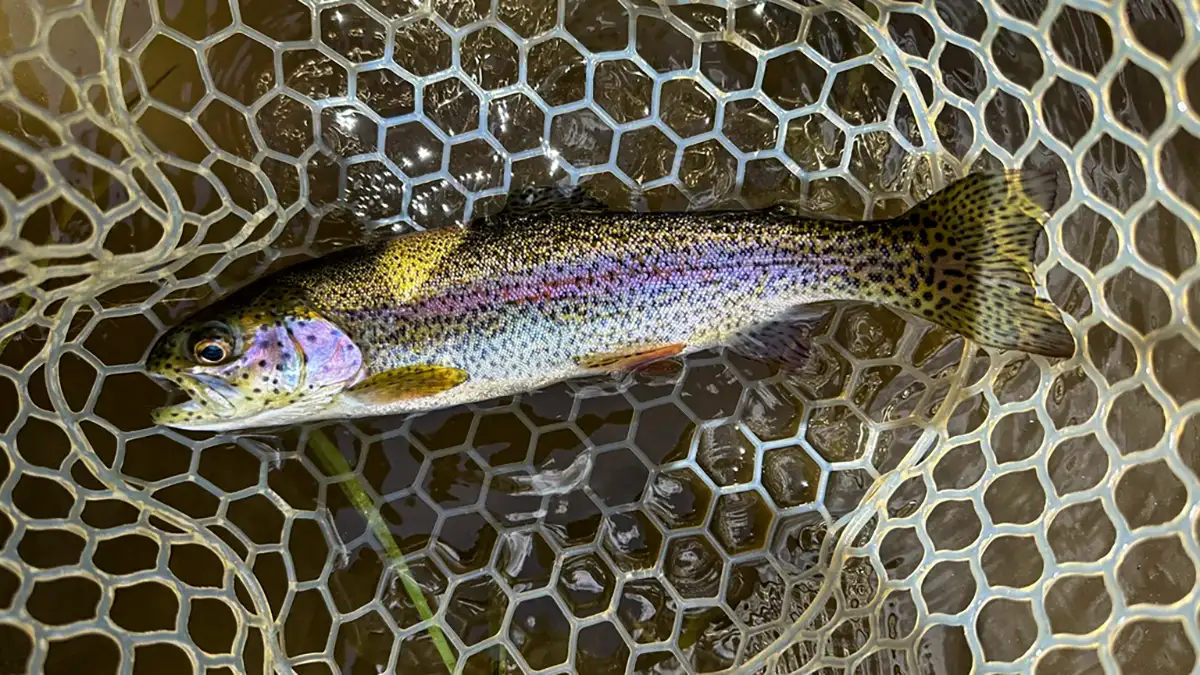
Rainbow Trout (Oncorhynchus mykiss)
- Olive green back fading into a silvery green side profile
- Black spots on sides, back, and top fins without margins
- Spots are found throughout the caudal fin
- Reddish-pink coloring can be present along the side and gill plate
- Belly is silvery white
- 10-12 anal fin rays
- Slightly forked caudal fin
- See the full Rainbow Trout Species profile
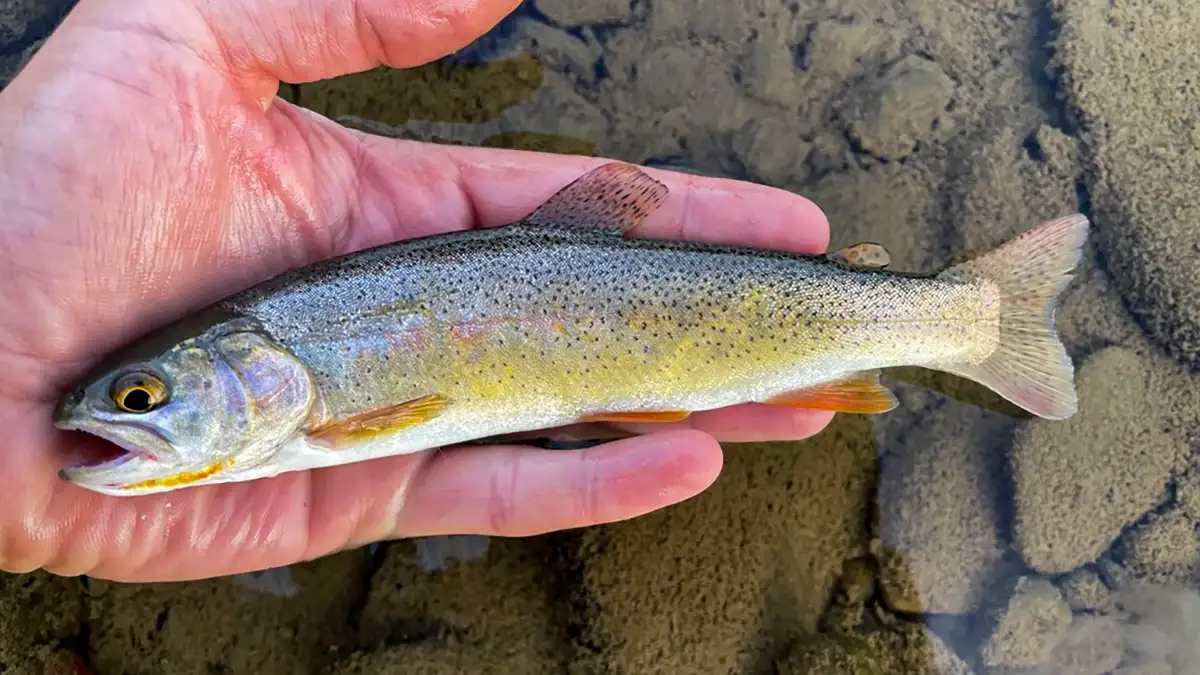
Cutthroat Trout
Formerly clumped into Oncorhynchus clarkii, as of 2023 there are now four recognized species. Coastal Cutthroat (Oncorhynchus clarkii), Lahontan Cutthroat Trout (Oncorhynchus henshawi), Westslope Cutthroat Trout (Oncorhynchus lewisi), Rocky Mountain Cutthroat Trout (Oncorhynchus virginalis)
- Green back fading into a silver green side
- Black spots generally towards the back half of body
- Orange slit under the lower jaw
- Can have yellow-orange anal, pelvic, and pectoral fins
- 8-12 anal fin rays
- Slightly forked caudal fin with various coloration and black spotting
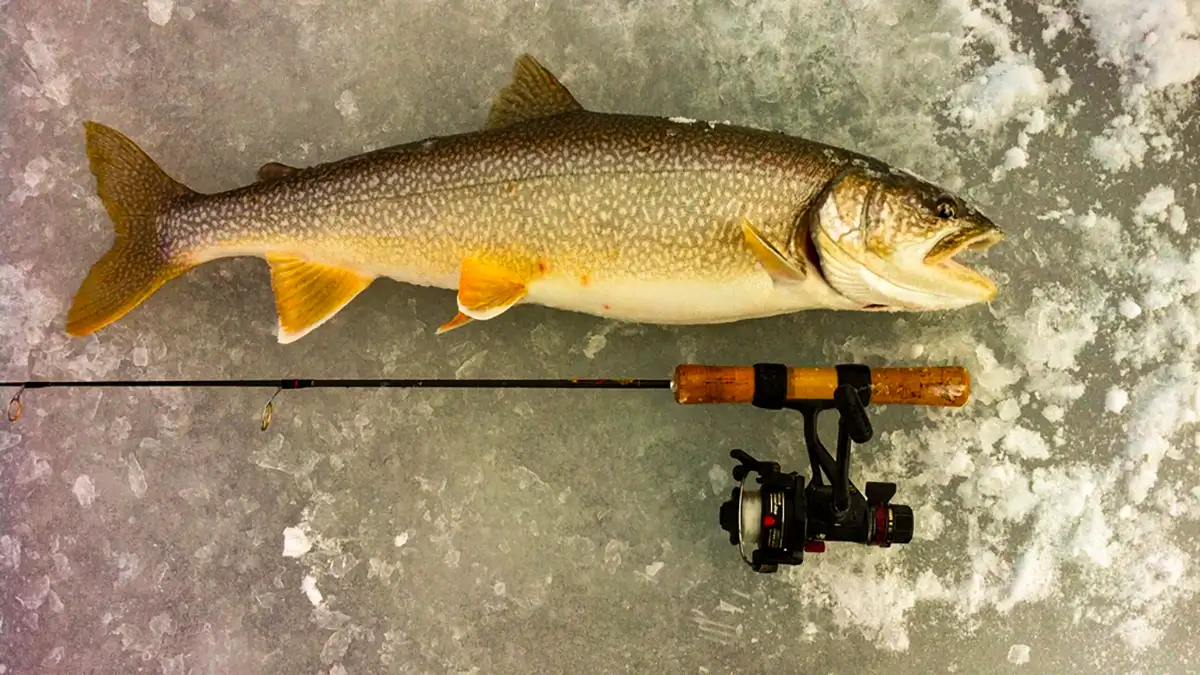
Lake Trout (Salvelinus namaycush)
- Dark brown to silvery green body color
- Cream colored spots/blotches along body and fins
- Anal, pectoral, and pelvic fins lighter brown with faded white edge
- Deeply forked caudal fin
- 8-12 anal fin rays
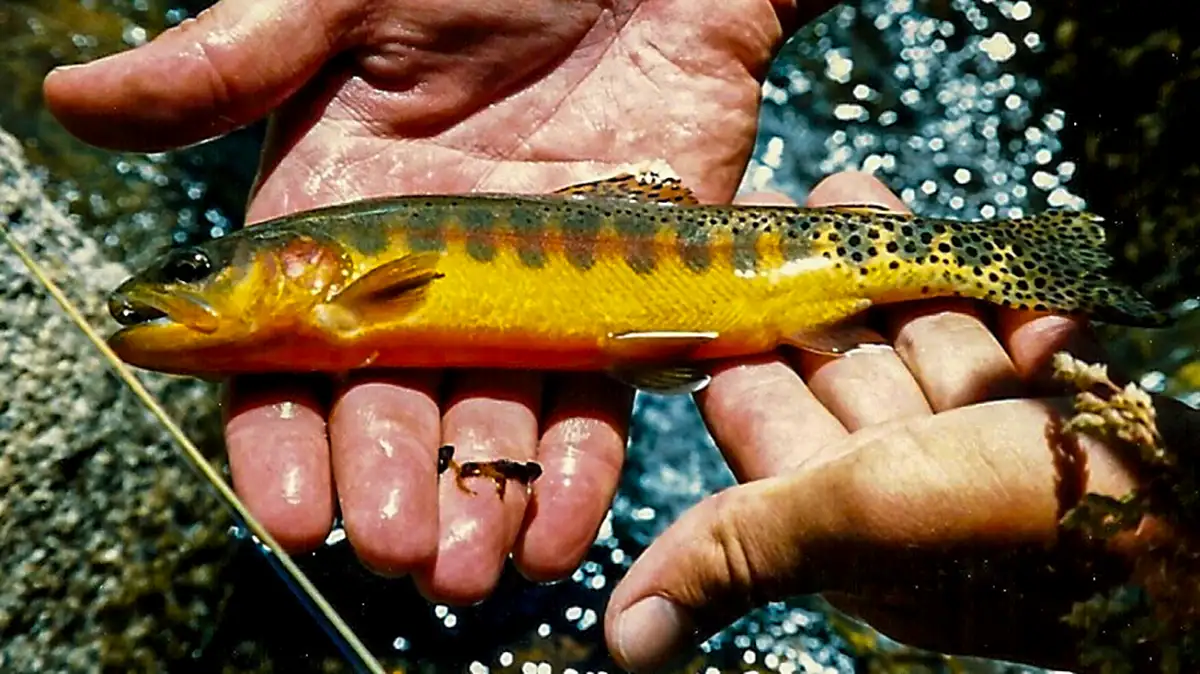
Golden Trout (Oncorhynchus aguabonita)
- Golden yellow body color with slightly green back
- Black spots on the top and back portion of the body
- Dorsal fins and caudal fin spotted
- Around 10 parr marks along the lateral line
- Reddish pink stripe down lateral line and gill plate
- Anal, pelvic, pectoral fins orangish with white and black tips
- 11 to 12 anal fin rays
Bull Trout (Salvelinus confluentus)
- Darker greenish-grey body with lighter belly
- Light to orange spots along body
- No markings on the dorsal or caudal fin
- Dorsal, adipose, and caudal fins dark
- Pelvic, pectoral, and anal fins lighter with white edge
- 8 to 11 anal fin rays

Tiger Trout (Salmo trutta × Salvelinus fontinalis)
- Cross between Brook and Brown trout
- Body color ranges from yellow-brown to deep orange
- Covered in wavy tiger-like markings and blotches
- Do have markings on the caudal fin
- Faded white edges on pelvic and anal fins
- 9-13 anal fin rays
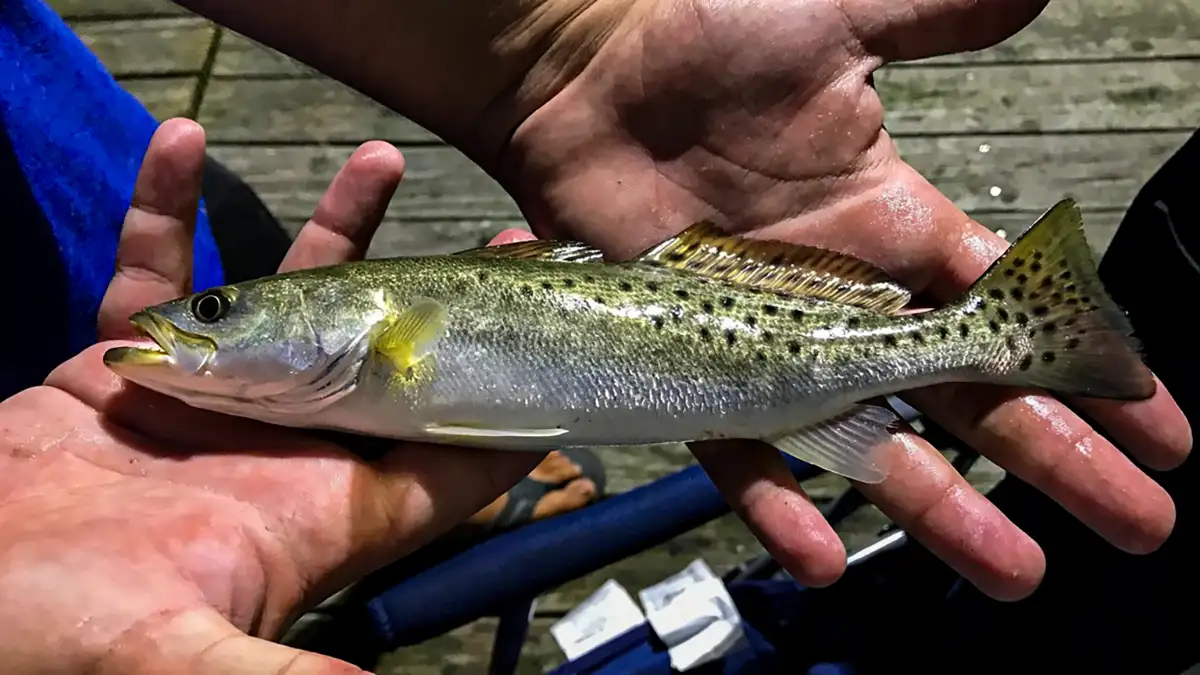
Spotted Seatrout (Cynoscion nebulosus)
- Actually it is not a Salmonidae species it is a Sciaenidae or drum croaker
- Dark grey to green back with white belly
- Dark round spots with white margins
- Pair of canine teeth on upper jaw
- Second dorsal fin instead of adipose
- Square caudal fin with black edge
- Jaw extends to back margin of the eye


